RB (Hygiene Home) Australia Pty Ltd v Henkel Australia Pty Ltd
RB (Hygiene Home) Australia Pty Ltd v Henkel Australia Pty Ltd [2022] FCA 1042
This decision by Justice Rofe relating to marks associated with dishwashing capsules is another example of how difficult it can be to protect a shape mark, particularly when used with other distinctive trade marks and trade indicia.
Background
The Applicants are both part of the Reckitt Benckiser group of companies, being a group of companies ultimately owned by Reckitt Benckiser Group PLC. The Second Applicant (RBF) is the owner of registered trade mark 1008914 (the 914 Mark) and registered trade mark 1211311 (the 311 Mark) (together, the Registered Marks). The First Applicant (RB) is an authorised user of the Registered Marks, though this was in issue as discussed below.
RB imports, markets and sells a range of dishwashing products in Australia under the FINISH brand. The products were first sold in Australia in 1964 and have been sold here continuously since then. At the time of the trial, FINISH products comprised over 60% share of the market in Australia. As at July 2021, FINISH had 63% of the dishwasher capsule market in Australia (in the judgment, the term dishwashing capsules is used to encompass all dishwashing products sold in either tablet, capsule or gelcap form).
The evidence established that RB spends a large amount on media advertising for its FINISH capsule products including television commercials, online platforms, billboards, and supermarket catalogues.
Since approximately 1999, RB has sold white and blue hard-pressed dishwashing capsules in Australia (FINISH Tablet) with a protruding red “Powerball” (pictured below).
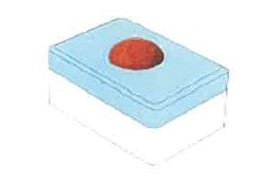
The evidence was that the constituents of the FINISH Tablet are naturally colourless, or white or yellow-ish. The red and blue colours were chosen for aesthetic reasons. Aside from the need to fit within the dishwasher tablet dispenser, there is no functional basis for the FINISH Tablet shape or the positioning of the components within the Tablet.
Since approximately 2007, RB has sold a three-coloured gelcap in Australia (FINISH Gelcap) (pictured below). The FINISH Gelcap, used for the FINISH Quantum and FINISH Quantum Ultimate products, consists of the colours white and blue, with a red Powerball. There is no functional basis for the placement of the components or their colouring. The colours and shape are purely aesthetic.
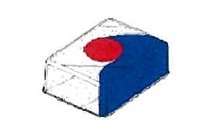

The FINISH range of dishwashing capsules were not limited to the Tablet and Gelcap pictured above, or to the red, white and blue colours.
Each variety of the FINISH capsule packaging has the FINISH POWERBALL Logo prominently at the top. This logo contains the word FINISH in dark blue text with a white border. The dot over the “i” is a red ball. Underneath the word FINISH is the word POWERBALL in upper case white font on a red background:
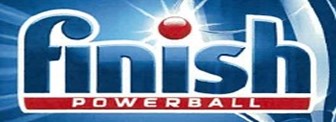
(the FINISH POWERBALL Logo).
Each package design features a stylised depiction of the dishwashing capsule.
In addition, the packaging often has other words prominently displayed. FINISH packaging is cluttered with other words, phrases and pictures.
The Registered Marks
The 914 Mark is a colour and shape mark registered for goods in classes 1 and 3. The mark comprises a rectangular tablet with a red ball and blue wave:
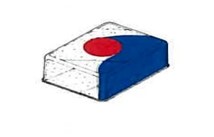
The 311 Mark, which is a figurative mark with no endorsement, is registered for goods in class 3, and is an image featuring a red ball in a white “explosion” against a blue backdrop:
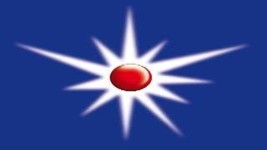
Henkel and the SOMAT products
The Respondent, Henkel, part of the global Henkel group, imports, markets and sells consumer and industrial goods in Australia, including laundry and home care goods.
Henkel AG, part of the Henkel group, has sold SOMAT branded dishwashing detergents in Europe for over 50 years. Henkel AG launched SOMAT Excellence Gelcaps (SE Gelcaps) in Germany and Switzerland in approximately April 2021. SE Gelcaps have been sold in countries including Austria, Poland, Italy and Spain.
Interlocutory injunction
RB obtained an interlocutory injunction stopping Henkel from offering for sale, selling and supplying SE Gelcaps in Australia (RB (Hygiene Home) Australia Pty Ltd v Henkel Australia Pty Ltd [2021] FCA 1094).
The proceedings
The Applicants alleged that Henkel’s actual and proposed use of the SE Logo (depicted below) promoting the SE Gelcaps would constitute trade mark infringement under s 120(1) of the Trade Marks Act 1995 (Cth) (the TMA), misleading and deceptive conduct in contravention of ss 18 and 29 of the Australian Consumer Law (the ACL) (Schedule 2 to the Competition and Consumer Act 2010 (Cth)), and passing off:
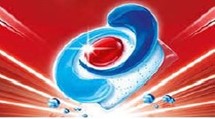
(the SE Logo).
Henkel applied for removal of the Registered Marks for non-use from 16 July 2018 to 16 July 2021 (the relevant period).
Non-use – the question of “use as a trade mark” and authorised use
Justice Rofe dealt with Henkel’s non-use application first. The key question was whether, in relation to the 914 Mark, RB’s use was use “as a trade mark”. Justice Rofe’s findings show it is difficult to establish infringement of shape marks, or establish use of the mark if challenged, particularly when the mark is used in combination with other marks.
RB relied on three “marks” that it said demonstrated use of the 914 Mark (relying on section 7(1) of the TMA, i.e. use without additions or alterations substantially affecting identity of the trade mark). Justice Rofe accepted one of those examples, in relation to the Quantum Ultimate Product, and considered whether the use of the 914 Mark in relation to the Quantum Ultimate Product (packaging for various Finish Quantum products, use in TV commercials, and on the Amazon website) was use “as a trade mark”:
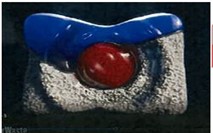
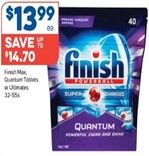
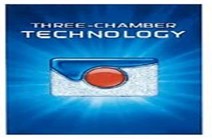
Her Honour concluded at [144] “I do not consider that the use of the image of the Quantum Ultimate Product is use as a trade mark on this packaging. The only purpose of the presence of the Quantum Ultimate Product image on this packaging is to show what the product inside the packaging looks like. This is not an example of use of the 914 Mark as a trade mark”.
In relation to the commercials, at [166], her Honour concluded that the “FINISH Quantum Ultimate capsule is depicted in a functional role to demonstrate the cleaning power of the FINISH Quantum Ultimate capsule”, and not to designate trade origin. That role “is performed by the prominent use of the FINISH brand name and FINISH POWERBALL Logo, both in the text displayed throughout the commercials, on the packaging depicted, and in the voiceovers which form part of the commercials”.
For the Amazon website, her Honour concluded that the images were not used to distinguish FINISH goods, and that, when the consumer encounters the images, they were “well and truly aware that they are looking at a particular variant of a FINISH product on the Amazon site”.
RB argued that the 311 Mark was as a distinct component of the FINISH brand logo. Justice Rofe acknowledged that use of a mark as a component of a larger composite mark, or with other marks, can constitute use of a trade mark, but concluded that the FINISH POWERBALL logo did not give the impression of several distinct trade marks. Consequently, the red Powerball on the FINISH POWERBALL Logo was not use of the 311 Mark.
On the question of authorised use, Rofe J concluded there was authorised use given the nature of the corporate structure and the unity of purpose of the business.
Her Honour refused to exercise her discretion to allow the Registered Marks to remain on the Register. Her Honour stated (at [223]) that RB had not explained its failure to use the Marks: “instead it continues to maintain that the product depictions constitute use”. The authors note it is difficult to explain a failure to use marks when positively putting a case that there has been actual use of the marks.
Infringement
Use as a trade mark
Her Honour noted at the outset of her reasons that, as the High Court has observed, “context is critical” and that the “context in which to consider whether the use of the SE Logo is use as a trade mark, includes its use in relation to other components of the packaging, and the environments in which consumers are likely to encounter the use.”
The experts agreed that it was common for dishwashing capsule packaging to include a prominently displayed brand; words such as “Quantum” or “Excellence” near the brand name; a stylised depiction of the dishwashing tablet; a background colour scheme, laudatory epithets; and the number of capsules. Moreover, dishwasher capsules are low involvement products with consumers looking to make a quick decision, using as few visual cues as possible. Her Honour found at [259] that “I consider that consumers seeking to identify and distinguish between products will first focus and rely on the prominent and distinctive feature that remains constant within each brand: the brand name.”
Justice Rofe concluded that the SOMAT brand clearly indicates to consumers the commercial source of the SE Gelcap and that the product image was a poor cue for identifying the brand. There was little likelihood that consumers would think SE Gelpac products come from the same source as the FINISH products and for this reason, the stylised depiction of the SE Gelcap on the SE Gelcap packaging was not use as a trade mark. For similar reasons, there was no use as a trade mark on other marketing materials. This reasoning is consistent with her Honour’s conclusions as to whether RB had used the Marks.
Other aspects of infringement
Her Honour considered the question of deceptive similarity, finding that the SE Logo was not deceptively similar to the Registered Marks. Her Honour concluded that if, contrary to her findings, the SE Logo infringed either of the Registered Marks, the use would fall within section 122(1)(b) of the TMA (good faith use of a product depiction).
Misleading or deceptive conduct and passing off
In relation to the misleading or deceptive conduct case, her Honour concluded that the relevant class of consumers is the ordinary and reasonable consumer who owns an automatic dishwasher and who is looking to replenish their stock of dishwashing capsules.
RB’s case was that it has developed a valuable reputation and goodwill in the “distinctive components” of dishwashing products. The distinctive components included: (1) a red Powerball prominently visible; and (2) the combination of the red Powerball with the colours blue and white.
Justice Rofe did not accept that RB had acquired a reputation in the claimed indicia sufficient to found a claim in passing off. There was no evidence RB had used the distinctive components without the FINISH POWERBALL Logo being prominently displayed.
Her Honour accepted that RB may have a reputation in the red Powerball, but this was only one part of the distinctive components relied upon by RB. Justice Rofe appears to express the view later that “the red Powerball alone” would have been insufficient to establish the claim.
In relation to the misleading or deceptive conduct case, brand was a good cue, and her Honour did not think a consumer would elevate the product image over that of the brand. Her Honour noted at [366] that “the packaging […] is very cluttered with up to 18 different visual cues, many of which … are common to the trade. One of the few things to stand out from the packaging to a consumer looking at a dizzying array of packages is the brand. The cluttered nature of the packaging forces the consumer to look at the brand.” Her Honour was of the view that consumers are unlikely to mistake the SOMAT brand for a sub-brand of FINISH.
As a final note, her Honour dismissed the argument that Henkel had made a “Biodegradability Representation” before 3 September 2021 that the SE Gelcaps are wholly biodegradable, which was accorded a mere two paragraphs in written closing.
This is an abridged version of an article that is published at https://www.listgbarristers.com.au/publications/intellectual-property-law-update-trade-marks-and-consumer-law-update-shape-mark-use-as-a-trade-mark-is-this-the-finish
